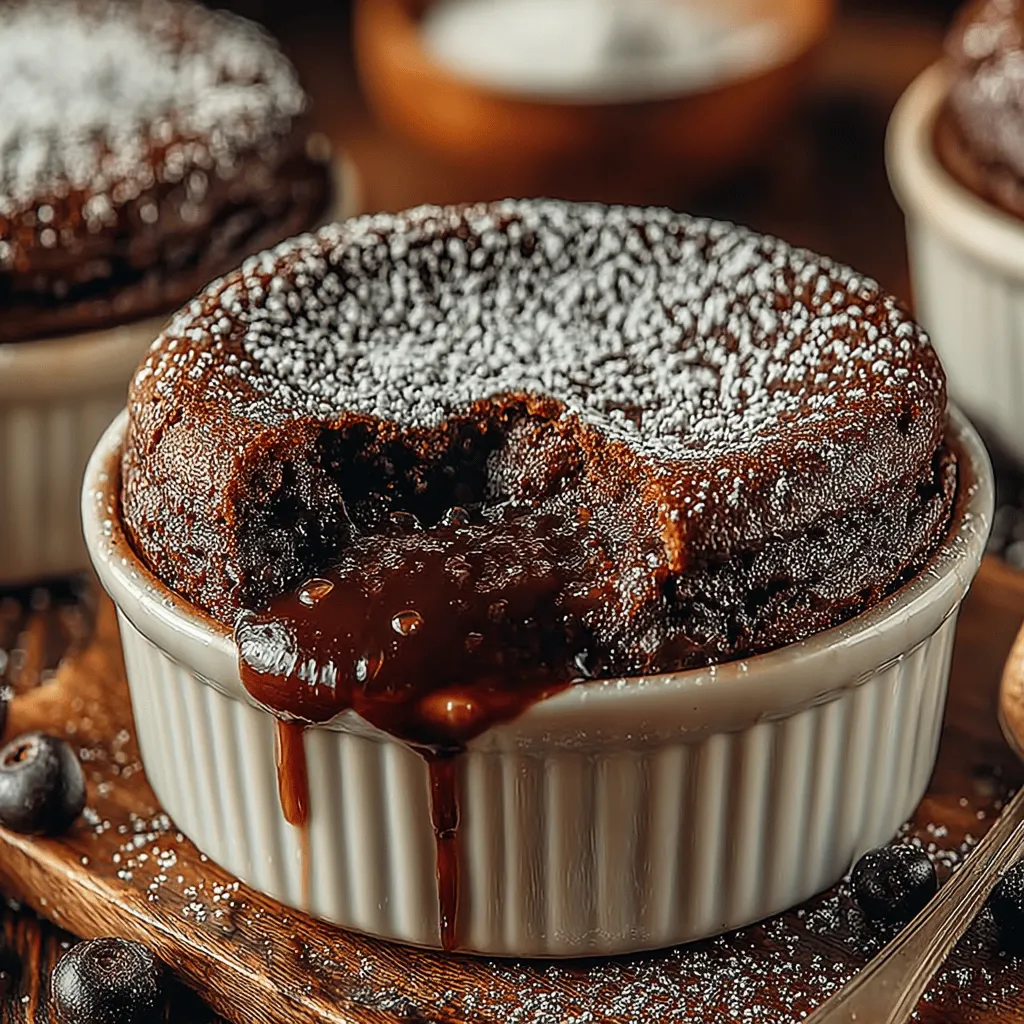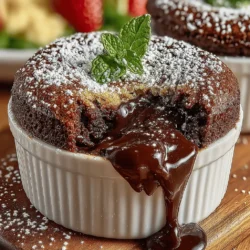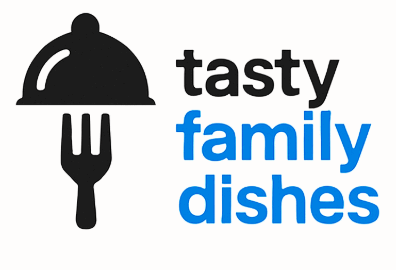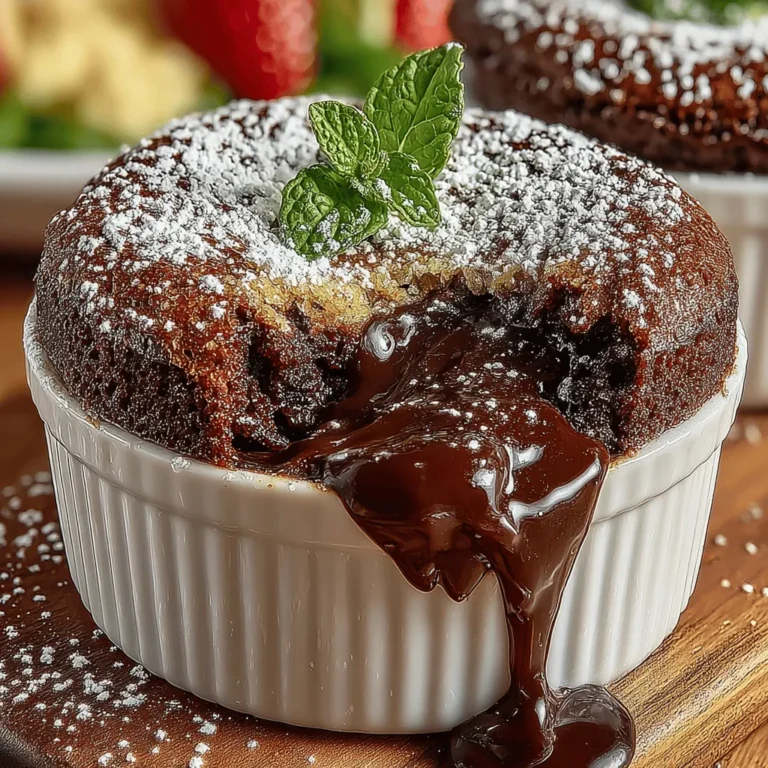Introduction to Heavenly Chocolate Soufflé
Indulging in a rich, airy chocolate soufflé is a delightful experience that transcends the ordinary dessert. This classic French dessert epitomizes culinary sophistication, combining the deep, intense flavors of high-quality dark chocolate with a light, fluffy texture that melts in your mouth. Often regarded as a hallmark of fine dining, the chocolate soufflé can intimidate even seasoned bakers, yet with the right approach, it is a dish that anyone can master. In this article, we will explore the art of creating the perfect chocolate soufflé, breaking down each step to ensure that even novice bakers can achieve impressive results.
The origins of the soufflé date back to the 18th century in France, where it began as a savory dish before evolving into the sweet version we cherish today. Its name, derived from the French verb “souffler,” meaning “to puff up,” perfectly describes the soufflé’s enchanting rise in the oven. The transformation of the ingredients into a light, airy masterpiece is not just a testament to the technique but also to the quality of the ingredients used.
This heavenly dessert is often served warm, with a soft center that contrasts beautifully with its delicately crisp exterior. Whether you are preparing it for a special occasion or simply to treat yourself, mastering the chocolate soufflé will undoubtedly impress your family and friends.
Understanding the Ingredients
The Key Components of a Chocolate Soufflé
To create a truly heavenly chocolate soufflé, understanding the role of each ingredient is essential. The key components of this dessert include dark chocolate, eggs, butter, sugar, flour, cream of tartar, and vanilla extract. Each ingredient plays a crucial role in achieving the perfect balance of flavor and texture.
– Dark Chocolate: The heart of any chocolate soufflé is the chocolate itself. Opting for high-quality dark chocolate, ideally with a cocoa content of around 70%, is essential for depth of flavor. The richness and complexity of the chocolate will shine through in the final product, elevating the soufflé from ordinary to extraordinary.
– Eggs: Eggs are the backbone of a soufflé, providing structure and aeration. The egg yolks contribute richness and flavor, while the egg whites, when whipped to soft peaks, lend the soufflé its signature lightness. The balance between the two is what allows the dessert to rise beautifully in the oven.
– Butter and Sugar: Butter adds richness and moisture, while sugar not only sweetens the soufflé but also aids in the stabilization of the egg whites. The combination of these two ingredients creates a delightful harmony that enhances the overall taste.
– Flour and Cream of Tartar: Although not always included, a small amount of flour can help provide stability to the soufflé. Cream of tartar, an acid derived from tartaric acid, is often added to the egg whites to help stabilize them, ensuring that they maintain their volume during baking.
– Vanilla Extract: A splash of vanilla extract enhances the overall flavor profile of the chocolate soufflé. It adds a subtle warmth that complements the richness of the chocolate, rounding out the dessert’s taste.
Preparing Your Kitchen for Success
Essential Baking Tools
Before diving into the recipe, it’s important to prepare your kitchen for success. Having the right tools at your disposal can make the process smoother and contribute to a more successful outcome. Here are some essential baking tools you’ll need to craft the perfect chocolate soufflé:
– Ramekins: The type and size of ramekins you use are crucial for baking soufflés. Opt for 6-ounce ramekins for individual servings. Ensure they are smooth and free of any scratches or cracks, as these can affect the soufflé’s rise. It’s also vital to choose ramekins that can withstand high oven temperatures and provide even heat distribution.
– Mixer and Bowls: A reliable stand mixer or hand mixer is essential for achieving the right texture in your egg whites. Using a clean, dry mixing bowl that is free from any grease is important, as even a small amount of fat can prevent the egg whites from whipping properly.
– Spatula and Oven Thermometer: A rubber spatula is ideal for gently folding the whipped egg whites into the chocolate mixture without deflating them. An oven thermometer is also a valuable tool, as it ensures your oven is at the correct temperature for baking. Many home ovens can be off by several degrees, which can significantly impact the soufflé’s rise.
Step-by-Step Guide to Crafting the Perfect Soufflé
Prepping the Ramekins
The first step in creating your chocolate soufflé is prepping the ramekins. This step is crucial to ensure that your soufflés rise beautifully without sticking to the sides of the dishes. Start by greasing each ramekin with a thin layer of butter, making sure to cover the bottom and sides thoroughly. This will provide a non-stick surface for the soufflé to climb as it bakes.
Next, sprinkle a small amount of granulated sugar into each greased ramekin, turning it to coat the interior evenly. The sugar not only adds a touch of sweetness but also creates a slightly crisp crust on the soufflé’s exterior. Once coated, tap out any excess sugar, and place the ramekins on a baking sheet for easy transport to the oven.
Melting the Chocolate
With the ramekins prepped, the next step is to melt the chocolate. This process requires patience and attention to detail to avoid burning the chocolate. Start by chopping the dark chocolate into small, uniform pieces to promote even melting. Place the chocolate in a heatproof bowl set over a pot of simmering water—a method known as a double boiler.
As the chocolate begins to melt, stir gently with a spatula, allowing it to become smooth and glossy. It’s important to keep the heat low and avoid direct contact with the boiling water, as excessive heat can cause the chocolate to seize or burn. Once the chocolate is fully melted, remove it from heat and allow it to cool slightly while you prepare the egg yolks.
Whisking the Egg Yolks
In a separate mixing bowl, whisk together the egg yolks and granulated sugar until the mixture is pale and thick. This process incorporates air into the yolks, which contributes to the soufflé’s light texture. The goal is to achieve a ribbon-like consistency, where the mixture falls from the whisk in a thick stream.
Once you’ve reached this stage, gently fold in the melted chocolate until fully combined. Be sure to incorporate the chocolate without overmixing, as this can deflate the air bubbles you’ve just created. The result should be a smooth, velvety chocolate mixture that serves as the base for your soufflé.
In the next section of our chocolate soufflé guide, we will continue with the essential steps of whipping the egg whites and combining them with the chocolate mixture, leading you closer to creating this decadent dessert. Each step is crucial, and with careful attention, you will be able to master the art of the chocolate soufflé.

Creating a chocolate soufflé is both an art and a science. This delicate dessert requires precision and care, but the results are well worth the effort. In this section, we will delve deeper into the critical steps of beating egg whites, folding techniques, baking tips, and serving suggestions that ensure your chocolate soufflé turns out perfectly every time.
Beating the Egg Whites
The success of your chocolate soufflé largely hinges on the proper preparation of the egg whites. Clean equipment is essential for this process, as any grease or residue can prevent the egg whites from achieving the desired volume. Make sure to use a glass or metal bowl, as plastic bowls can often retain oils.
Technique for Beating Egg Whites to Stiff Peaks
1. Separate the Eggs: Begin by carefully separating the egg whites from the yolks. It’s vital that no yolk gets into the egg whites, as even a small amount can hinder the whipping process.
2. Whip the Egg Whites: Using a hand mixer or stand mixer, start beating the egg whites on medium speed until they become frothy. Gradually increase the speed to high as the mixture begins to thicken.
3. Add Sugar: Once the egg whites start to form soft peaks, slowly add granulated sugar, about a tablespoon at a time. This helps stabilize the egg whites. Continue to beat until you reach stiff peaks, which means that the egg whites hold their shape firmly when the beaters are lifted.
4. Check for Clarity: Perfectly beaten egg whites should appear glossy and smooth, without any graininess from the sugar.
Taking the time to properly whip your egg whites is crucial. This aeration is what gives the soufflé its signature lightness and height.
Folding Techniques
Once the egg whites are beaten to perfection, the next step is to gently fold them into the chocolate mixture. This is where many bakers can falter, as too aggressive mixing can deflate the whipped egg whites, resulting in a dense soufflé.
Gentle Folding Method
1. Add a Base: Start by adding a small portion of the beaten egg whites to the chocolate batter. This will lighten the mixture, making it easier to incorporate the rest of the egg whites.
2. Use a Spatula: With a rubber spatula, gently cut through the mixture and lift it up, folding it over itself. Rotate the bowl as you go to ensure even mixing.
3. Incorporate Gradually: Continue to add the remaining egg whites in thirds, folding gently after each addition. The goal is to maintain as much air in the egg whites as possible while creating a homogenous mixture.
4. Final Mix: When the last of the egg whites are added, stop folding as soon as there are no visible streaks of egg whites. Overmixing at this stage can lead to a loss of volume.
Mastering the folding technique is essential for achieving the light, airy texture that defines a classic soufflé.
Baking the Soufflé
Now that your soufflé mixture is prepared, it’s time to bake. The baking process is crucial for achieving that perfect soufflé rise and the soft, custardy center.
Oven Temperature and Timing
1. Preheat the Oven: Preheat your oven to 375°F (190°C) at least 15 minutes before baking. A properly preheated oven ensures that the soufflé rises evenly right from the start.
2. Bake Time: Pour the soufflé mixture into prepared ramekins and place them on a baking tray for easy handling. Bake for about 12-15 minutes, but keep an eye on them—the exact time can vary based on your oven.
Recognizing When It’s Done
Visual cues are critical in determining when your soufflé is perfectly baked. Look for:
– Risen and Puffed: The soufflé should rise significantly above the rim of the ramekin.
– Set Edges: The edges should be firm, while the center remains slightly jiggly when gently shaken.
– Lightly Browned Top: The top should have a light golden color, indicating it has baked through without overcooking.
Once it achieves these characteristics, it’s time to take your soufflé out of the oven!
Serving and Presentation
The final presentation of your chocolate soufflé can elevate the overall dessert experience, making it as visually appealing as it is delicious.
Dusting with Powdered Sugar
A simple yet elegant touch is to dust your soufflé with powdered sugar just before serving. This not only adds a touch of sweetness but also creates a beautiful contrast against the dark chocolate.
Pairing Suggestions
To complement the rich flavors of the chocolate soufflé, consider serving it with fresh berries, such as raspberries or strawberries. The tartness of the berries cuts through the richness and creates a delightful balance. Additionally, a dollop of freshly whipped cream can add a luxurious creaminess that enhances each bite.
Common Challenges and How to Overcome Them
Even experienced bakers can face challenges when making a soufflé. Here are some common issues and tips to avoid them.
Soufflé Collapse
One of the most frustrating outcomes is a soufflé that collapses shortly after coming out of the oven. This can happen for several reasons:
– Underbeaten Egg Whites: Ensure that your egg whites are whipped to stiff peaks. If they are still runny, they won’t provide the necessary structure.
– Overmixing: As discussed, be gentle when folding in the egg whites. Aggressive mixing can deflate the air bubbles that give the soufflé its height.
– Oven Temperature: An oven that’s too cool can prevent the soufflé from rising properly. Always preheat your oven adequately and check with an oven thermometer if necessary.
Overbaking
Overbaking can lead to a dry, rubbery texture, which is not the ideal outcome for a soufflé. To avoid this:
– Monitor Closely: Check the soufflé a few minutes before the suggested baking time. Every oven is different, and you may need to adjust the time slightly.
– Use a Gentle Touch: When you gently shake the ramekin, look for a slight jiggle in the center. If it’s completely firm, it may have overbaked.
Conclusion: The Joy of Baking a Chocolate Soufflé
Creating a heavenly chocolate soufflé is not just about following a recipe; it’s about understanding the science and artistry behind this exquisite dessert. With practice, anyone can master this elegant dish, impressing friends and family alike with its rich flavors and airy texture. The satisfaction of pulling a perfectly risen soufflé from the oven is unparalleled, making it a rewarding addition to any home baker’s repertoire.
Embrace the challenge, and let the magic of chocolate soufflé bring joy to your kitchen. Whether for a special occasion or a delightful treat for yourself, this classic dessert is sure to become a favorite in your culinary collection. Happy baking!


